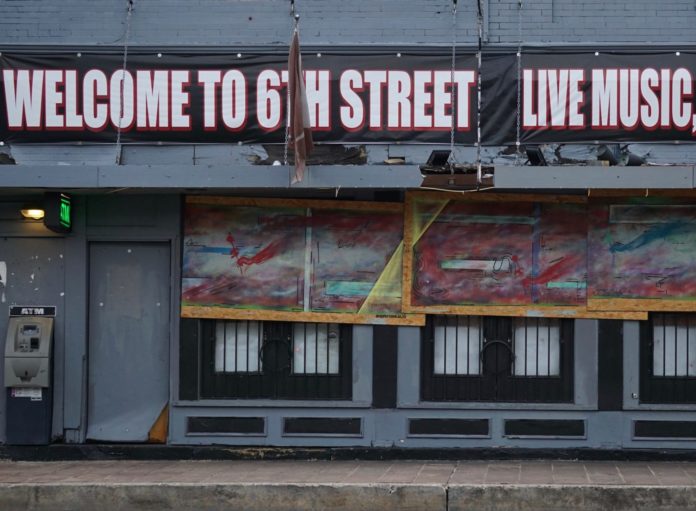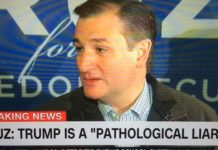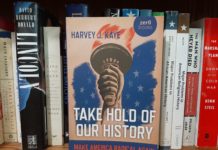Not so fast, argues the head of iconic Austin City Limits to those who fear the pandemic will sweep away both the city’s claim as the world’s live music capital and the artists who make it happen.
Yes, the pain that has shuttered venues, cancelled festivals and devastated incomes of artists and so many others in Austin’s creative economy is real and intense, says ACL General Manager Tom Gimbel. But on the other side of the continuing misery lies a bright future of creativity and innovation.
“I think Austin can be an epicenter of that post-COVID musical awakening,” Gimbel said in a wide-ranging conversation with Urbānitūs editors. Gimbel shared his views on the nature of competition in the music industry, the coming fusion of music and technology in Austin and the lessons learned from the world’s rush into online music that foretell a revolution of live music blended with streaming that will reshape the $50 billion global industry.
In July, a survey commissioned by the Austin Chamber of Commerce found that more than 60 percent of Austin’s music venues risked permanent closure by the end of the year, with one source saying 90 percent. That survey, done by the University of Houston’s Hobby School of Public Affairs echoed widely, even finding its way into the Wall Street Journal last month in a story speculating live music could suffer a permanent blow in Austin.
But it is that word “permanent” with which Gimbel differs most strongly. While the deep challenges for artists who can’t make rent, restaurants without patrons, and venues that can’t make the business math work should not to be diminished, at least three dynamics in the music economy challenge the dismal narrative:
- A pandemic is unlike other natural disasters. Affecting all centers of live music equally, it does not create the opportunity for Las Vegas, Nashville, Seattle or Chicago to move in on Austin’s music franchise. “We’re all in this together,” Gimbel said.
- The world’s discovery of online tools for education, meetings and even political conventions opens a door on the potential for new streaming technologies to be blended in ways to ultimately make live music more compelling – not less. And Gimbel sees untapped potential for Austin’s technology and music sectors to collaborate in and around the streaming trend.
- The screeching halt to live music production has created a pent-up demand on the part of artists, composers and fans that will release a new pulse of energy from the middle of next year onward, much as happened with the “Roaring Twenties” that followed the last great pandemic in 1918. “We’ll probably see a baby boom, but I also think we’re going to see an album boom,” said Gimbel.
Those insights and others came in an online conversation between Gimbel, Urbānitūs Editor David Judson and Associate Editor Robert Brehm. The full discussion, edited for clarity, is below:
DAVID JUDSON: I think it’s important for readers to understand the complexity of Austin City Limits. In addition to being of one of perhaps a half a dozen global brands representing Austin, it’s interesting that it is at least three things in one: the 45-year-old, non-profit, public television program, the for-profit festival which is so much newer. And of course the venue downtown. Maybe we could start there if you could explain how those pieces of the ACL-Austin City Limits puzzle fit together?
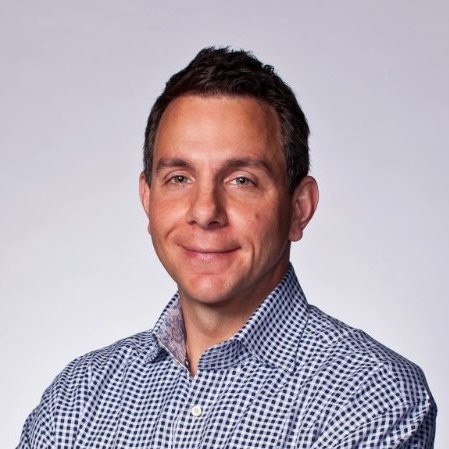
In addition to managing operations for the production of the “ACL” television show, Gimbel also oversees the partner relationships with the Austin City Limits Music Festival, award-winning ACL Live at The Moody Theater live music venue and Austin City Limits Radio station.
Prior to joining Austin City Limits in early 2011, Gimbel’s thirty-year music industry career has included roles in independent marketing, indie and major record labels, and artist management. From 1995 – 2005, Gimbel held senior executive positions with Arista Records where he guided successful sales and marketing campaigns for Grammy Award winning and multi-platinum sales certified artists such as Santana, Outkast, Pink, Dido, Whitney Houston, Puff Daddy, TLC, Usher, Toni Braxton, Carly Simon, Annie Lennox and Sarah McLachlan.
In 2017, Gimbel and Courtney Blanton co-founded the Hi How Are You Project – a non-profit organization dedicated to removing the stigma and encouraging open conversation around mental health.
TOM GIMBEL: Austin City Limits is a production of KLRU, the public television station here in central Texas. It was started in 1974, without any grand vision of being a global brand. It was a call that PBS (the Public Broadcasting Service) made to stations to create some local content. And what was happening in Austin around that time was the birth of the outlaw country movement. Willie Nelson had moved here from Nashville. A number of other artists were here, Jerry Jeff Walker, and others. And there was a book written about that burgeoning scene called the Improbable Rise of Redneck Rock. And Bill Arhos who was the general manager of KLRU at the time, said, “Well, if a book has been written about it, there must be something happening here. So let’s, let’s explore our local music scene.” The first artist that was recorded was Willie Nelson, which was a pretty good place to start.
That was the pilot that aired in 1975. Then, in 1976, the first full season debuted. The first episode was Asleep at the Wheel, also with Willie Nelson and, for the first four years, it really documented the local Austin music scene. Terry Lickona, who had moved to Austin from Poughkeepsie, New York, and was doing some on air talent for KLRU and offered to be the producer for the show. Terry was really the one who started to look beyond Austin. One of the key moments was the booking of Tom Waits, out of new Orleans, to come and play the show. So we went from just Austin to starting to look more nationally, and then the show really started to grow.
Pretty soon we were booking some legendary Nashville artists like Merle Haggard and Waylon Jennings, with the help of Darrell Royal, who was the head coach of the University of Texas football team at the time and had some great Nashville connections. Then it was Ray Charles. Pretty soon it was off to the races and Austin City Limits was really established as a national television program that continued for 26 years. Then an idea that had been kicking around within the station for a while, about doing an Austin City Limits music festival came to light when KLRU partnered with what was then Capital Sports Entertainment to do the Austin City Limits Music festival. The lineup of the original festival was very much in keeping with the style and genres that were playing on the Austin City Limits television show.
The first ACL festival was not sold out in advance. There was a lot of risk, but there was great walk-up business. It was successful enough that we continued that relationship. CSE turned into C3 Presents, and the festival went from one weekend to two weekends. Over the last 19 years, it’s turned into one of the top four music festivals in the country if not the world. Ten years ago, in early 2011, ACL Live at the Moody Theater was, was opened. There’s really nothing else like it in the country, this hybrid of a music venue in a television studio.
… We’ve licensed the show globally. You can watch it on airlines around the world and television networks around the world. So it’s, it’s really become something more than just a television show, but the humble beginnings were a one time pilot with Willie Nelson and then 25 years of this steady growth…
And now we’ve got a radio component. The station is ACL Radio and it’s a 24/7 broadcast with many of the featured artists having performed at one time at the ACL Festival, at ACL Live or on the Austin City Limits television show.
I don’t know when it was… but somewhere along the line Austin City Limits became a lifestyle. We’ve expanded the festival brand into Australia and New Zealand with the Sydney City Limits and Auckland City Limits festivals. We’ve licensed the show globally. You can watch it on airlines and television networks around the world. So it’s, it’s really become something more than just a television show, but the humble beginnings were one pilot show with Willie Nelson. It’s really something that’s very unique.
It’s the longest running music television show in the world, and that wouldn’t be possible if we weren’t partnered with PBS. What PBS allows you to do is to create a show with no commercial interruptions. I look at that in two ways, one literally and one figuratively. There’s no other place that you can see one hour of uninterrupted live music on television. There are no commercials obviously on PBS, but also when I say no commercial interruptions, if we had a for-profit network, there would have been pressure at some time to drastically change our booking policy and start booking big acts with huge draw and huge ratings, because it would only be about selling advertising. Our team has had the luxury and the privilege of being able to book a television show purely based on the quality of the talent. Integrity is built into the DNA of Austin City Limits, which I think makes the brand very trusted and therefore very valuable to music fans. I’m really proud of what it means to Austin. I think a lot of Austinites look at Austin City Limits as their own.
JUDSON: Everybody would agree that the live music culture of Austin is important to the foundation of the city’s ethos, to its progressive politics, environmental awareness and cultural diversity, and it even carries into the tech economy. So when we talk about the health of live music, and we’ll talk a bit more about the health of live music amid COVID, how does does the live music ecosystem dovetail with these seemingly unrelated, but perhaps very related, other sectors in Austin?
GIMBEL: Like the integrity built into the DNA of Austin City Limits. I think music is built into the DNA of Austin. You look at the history of Austin City Limits and that period from 1975 onward, and you look at some of the businesses that started in Austin and around that time… you’ve got GSD&M, the prominent advertising agency. In the late eighties, you’ve got Dell coming to prominence and then the tech world starts to look at Austin and more and more businesses are coming here. When you look at industries like entertainment and advertising and tech, they want to attract the best and the brightest young talent. If you look at any jobs tab on any website of any major employer in Austin, you’re going to see live music featured as a real selling feature of Austin.
…in the South, in 1972, if you had hair below your ears, you were going to get your ass kicked, but not here. I think this is just very, very special about Austin. There is a tolerance in Austin…
The culture of Austin attracts the young talent, the young talent helps the businesses succeed. Then you look at our underwriters. You have Cirrus Logic, you have Dell Technologies as direct supporters of Austin City Limits, which then helps the show. The show becomes this weekly commercial that goes out nationwide and shows people that Austin is a fun, energetic, live music place to be. I’ll go back even further. Before Austin City Limits, before The Improbable Rise of Redneck Rock, there was a reason that the musicians came to Austin. In the South, in 1972, if you had hair below your ears, you were going to get your ass kicked, but not here. I think this is something that is just very, very special about Austin. There was a tolerance in Austin that didn’t exist elsewhere in the South at that time.
When Willie Nelson first came here and he saw the festival out in Dripping Springs, he said it was the only place he saw hippies and rednecks standing side by side, and they were coming together over the love of music, but that wasn’t happening anywhere else in the South. So that attracted the musicians here, because there was the tolerance, people getting along. It becomes such an integral part of our city — from the seventies to the present day. I think the businesses rely on the live music scene and then the live music scene relies on the businesses.
ROBERT BREHM: I have several musician friends in Austin and over the past few years it’s become increasingly difficult to live in Austin as an independent musician. The rising cost of housing and all. So I’m wondering, how do you think that Austin can work on that relationship with these musicians, these local musicians who are such an integral part of the DNA of the city and the increasing difficulty for them to live in Austin, even before the pandemic?
GIMBEL: It’s a really challenging question. The city government is certainly taking a look at it. Mayor (Steve) Adler is taking a look at it. The State of Texas has a music office that is led by really good people who are dedicated to looking at those sorts of problems. At the same time, real estate is real estate. How do you tell a property owner or developer, “I want you to purchase this piece of property and spend this amount of money to develop it, but then not extract fair market value?” I look at people like Gary Keller, who obviously is a hugely successful businessman here in Austin, who has really put his money where his mouth is and done some great things to support local music venues and to support local musicians. He’s helped to bring a coalition together – of people like myself who work in the music industry – to work on foundational changes that can be put in place to help support our creative class. You look at organizations like HAAM (Health Alliance for Austin Musicians) and SIMS (The SIMS Foundation) that are there to provide medical assistance, mental health assistance, financial counseling. There’s the Black Fret organization, which I serve as a member of the board of mentors. We provide services for free to the artists to consult, and give them advice on how can they best strategize their career. How can they spend their grant money most intelligently to really give them a boost.
But also, when you look at surrounding communities that are going to start developing their own kind of artists’ enclaves, whether it’s Lockhart or San Marcos or other areas that might be more affordable. It’s not unusual for large cities to see this migration. It’s really a problem that we have to attack from all sides. I don’t know that there’s one easy solution for it. It is an issue, and it’s something that those of us who work in this space are diligent about and paying attention to and trying to solve
JUDSON: Within that, maybe it’s time to move on to the big question, the 900 pound gorilla of a question looming in the background. This is of course is the forecast that has become almost a meme around town that the COVID-19 pandemic could close up to 90 percent of the live music venues permanently. With signs pointing to the viruses durability, it’s not going away tomorrow, how do you see that whole scenario unfolding?
GIMBEL: Maybe I’m just being optimistic here, but I disagree with the word permanently. I acknowledge the difficulty that music venues are facing, and that so many businesses are facing: hospitality, restaurants, anything really entertainment related, movie theaters, sports. Anything that brings people together is struggling right now. We acknowledge that reality. I do think that there are going to be some venues that are going to close their doors because the grant money that is available, versus the monthly cash burn associated with maintaining a live music venue.., well the math just doesn’t add up. And that’s why you’re seeing those statistics. What I would anticipate for the second half of 2021, however, and in 2022 and 2023, is that we’re going to see a release of the pent-up demand.
… if we look at the old adage of “you don’t know what you’ve got until it’s gone,” I wonder how many people are recognizing to that, “I really love live music. I miss live music. I can’t wait to get out to see live music again.” And they’re going to make it even more of a habit than they had before…
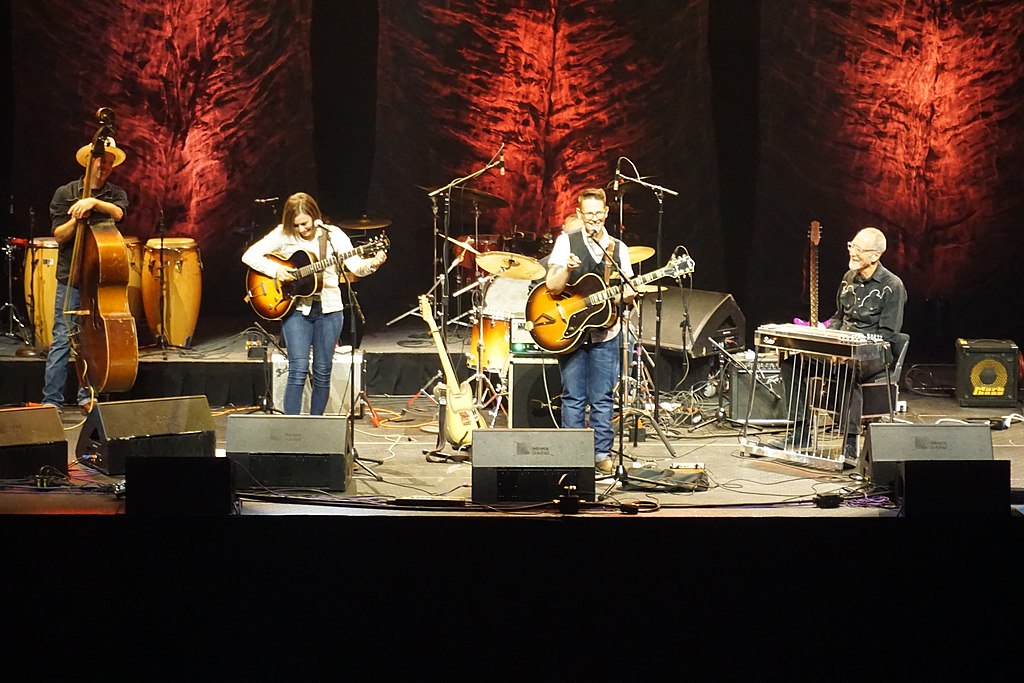
Photo: Michael Barera, Wikimedia Commons
That’s happening right now. It’s not just music fans who want to get out and see live music. The musicians want to get out and play again; their support crews want to start earning money again. You’re going to have musicians who are really eager to get back on the road, and a lot of music fans who want to see live shows, maybe more than ever. You know, if we look at the old adage of “you don’t know what you’ve got until it’s gone,” I wonder how many people are recognizing to that, “I really love live music. I miss live music. I can’t wait to get out to see live music again.” They’re going to make it even more of a habit than they had before. You have two sides of the triangle, you’ve got the musicians eagerly wanting to get back on the road and pent up demand from fans who want to see live music.
There has to be a place for those two to come together. We may find that there are some venues that are temporarily shuttered and there will either be new ownership or restructured ownership of people coming into to reopen and reimagine those live music venues, and bring people back together again. I just don’t see it as a permanent situation, although I do acknowledge that for some, there may be some people making career changes. There may be some people who were music venue owners, or work in a music venue now who decide, “look, I can’t wait a year or 18 months. I need to do something now, and they’re going to make a change.” But that class will be replaced by a new class of music entrepreneurs who will enter the field.
BREHM: Austin, because of the live music, has become such a destination for things like bachelor parties, bachelorette parties, birthdays, friends having a reunion to go out and have some fun. It’s not just the effect on music venues, but the whole hospitality industry in Austin. How does the city maintain so many people employed in that sector as time goes by and the risk continues to persist? How long are we going to be able to sustain people employed in those industries without a sustainable revenue coming back? That’s a real question. .
GIMBEL: The thing that I look at with Austin versus a situation where let’s say there was a natural disaster, say Katrina and the effect on New Orleans. What happens in a situation where there’s a natural disaster in one market is it gives other markets the opportunity to fill that competitive void. But this is different. Nashville, isn’t gaining on Austin right now, Las Vegas isn’t gaining on Austin, Seattle isn’t gaining on Austin, Chicago isn’t gaining on us. Boston is not. We’re all in this together. Everybody is in the same situation. So yes, we are threatened in our immediate present. I would be far more concerned if it was something that was local or regional that was affecting us and it allowed others to come in and fill the place that Austin has held in the world. I don’t think other markets are positioned to do that. Again, I think that tolerant spirit is present in Austin. The entrepreneurial spirit is in Austin and certainly the love of live music is present in Austin. All the ingredients are going to be there when this organism can start replicating again. The DNA is still there and we will rebuild.
… if we just sit back on our laurels and expect to just open up the same rooms, the same model and don’t evolve, that could be challenging…
The question we should be asking ourselves is, “If we have an opportunity to rebuild and really take stock of our opportunity, we know that there are going to be changes perhaps in the ownership, the density, the location, the capacity business model of live music. How can we best prepare ourselves as a market and as a group of people who live here and work here in this industry to revolutionize in some way and, and come out of this stronger?” Because if we just sit back on our laurels and expect to just open up the same rooms with the same model and we don’t evolve, that could be challenging. Because other markets are going through the same things. If they open back up and evolve, maybe they will have a new found advantage that they didn’t have before.
JUDSON: On that theme, one of the things that we’re all debating and trying to get our arms around in the context of the pandemic is the whole rush online, online learning, companies working remotely, our lives moving to Zoom. There’s been this migration into virtual reality that’s so profound and there is a lot of speculation about how enduring that will be and what those changes will mean. Going back to your point about structural change, in prepping for this conversation, one of the sets of numbers that I found was from a look by the World Economic Forum in Davos at the global business music business and the relationship between live events and recorded music. Standing out is the fact that streaming has gone from 9 percent to a total of 47 percent of the $50 billion global music economy. And this is all in the last six years pre-COVID. It sounds like you’re experimenting with some more activities online. Are we at an inflection inflection point comparable to what happened 20 years ago or more with Napster where the recorded music sector was sent into retreat and live music moved forward? With streaming being a technology that allows monetization in new ways that the old recording model did not, is there a scenario whereby Austin becomes the capital of streaming along with being the capital of live music?
GIMBEL: Well, it’s an interesting analogy. If we look at Napster as a forced reckoning that the record industry had to deal with at the time when digital music was first coming online, each individual record label was trying to look at selling digital music. We were in a period where the nature of pop music had shifted from being artist driven to producer driven – meaning that labels were aligning an artist with a series of prominent producers, who wrote and produced songs. The producers were making the hits and they became very expensive. If you wanted a hit, you hired one of the big producers. But then what we saw, for example, was that we would have two hits on the album because the labels could only afford two of the top producers, and then turned to lesser producers for the rest.
As result, albums became very top heavy. Fans said, “I don’t want to spend $15 for one or two songs that I like. I just want to buy the one or two songs.” The labels were then saying, “OK, we’ll sell you a digital song for $3.49” and the fans said, “that’s too expensive.” Napster comes along and says, “here’s everything for free.” It just turned the music industry on its ear. It took many painful years for the industry to be able to work its way out of that. There were many failed attempts at digital music services, some were ahead of their time. It took Steve Jobs and Apple, who were considered music industry outsiders, to establish the first comprehensive download store. A lot of things were forced on the industry because of Napster.
JUDSON: So now you bring us to what’s being forced on, on us by, by COVID right now?
GIMBEL: Napster originally undervalued digital music, because it set a price point in the mind of some consumers. At that point, especially with young consumers who were first dabbling in music consumption, it set the price point at zero. It took a long time for Spotify and Amazon Music and Apple Music to establish the mindset that it’s okay to pay $9.99 a month to have all the music that you want because Napster was delivering all the music that you wanted for $0 twenty years ago. Still, if you look at the economics of Spotify, they’re not a profitable company by and large. Their stock price and their valuation is very high, but they’re still not turning a consistent profit on a quarterly basis. We are still in its nascent stages as we’re hitting this critical mass of paid subscribers.
… What is really valuable about the live music experience is the sense of community and belonging and connection. And it’s not quite there with live streaming. You are removed. So there’s always going to be a greater desire for the live connection…
What I think we’re seeing with COVID-19, just as we saw with Napster, is an undervaluing of live streaming because there’s so much live streaming that’s available for free. Yes, there are some artists who are putting their live streams behind a paywall, and doing so with some success. But I think that’s a very, very small fraction of the overall live streaming pool, which is predominantly free. We’re just keeping people engaged in the music ecosystem. What is really valuable about the live music experience is the sense of community and belonging and connection. It’s not quite there with live streaming. You are removed. So there’s always going to be a greater desire for the live connection.
We want to be connected to other humans. We’re communal creatures. That’s never going to be replicated by live streaming. Just as an actual, true vinyl recording is more attractive to certain people than a compressed digital audio file. Because in a digital music file, the majority of the sound is actually removed, and we feel this on a soul level. When you point to the music statistics of how streaming has overtaken downloads and other sales, you need to also notice that during that same time, you’re seeing a pretty substantial increase in vinyl sales. Consumers are saying, “I want my vinyl, but I also want the convenience of the digital streaming.” I consume music that way. When I really want to listen to music, I listen to vinyl. But certainly I love being able to travel and have anything that I want available on my phone or in my car.
So how can we duplicate that model from a live perspective and also continue to feature live streaming? What I think we can start doing is realize that live streaming can give you things that you’ve never had when you go to a live show. Part of the reason I got into the music business is I wanted to see everything. I wanted to see how the magic trick was done. I wanted to go backstage. I wanted to see what the sound guy was doing. I wanted to see how it all worked. I love being able to do that as a part of my job. So how can I give that same experience to a fan via live streaming? Can I have multiple cameras that give you access to the soundboard or show you what it looks like on the stage and what it looks like backstage, and then you get to see an interview with the artist after the performance?
You get to go places that you don’t get to go when you’re at a live music venue. I think just putting a stationary camera in the back of a venue and calling it live streaming is really underutilizing the technology. I think what we’re going to see is a strong return to live music but live streaming is going to be here to stay. Streaming will offer enhanced features that make it a compelling experience. Maybe just like with Spotify and Amazon and Apple, you eventually will see venues and other music establishments creating a live streaming subscription that gives you access to every show in the venue, plus backstage views and other enhanced access. A fan may use streaming 90 percent of the time, but the other 10 percent of the time, when they really want to go see a show, they go out and they pay to see a live show. The result may be that fans are consuming more live music, which is what we’ve discovered with the digital music networks. It hasn’t replaced music consumption. It’s actually elevated it and enhanced it.
BREHM: Well, I have a concluding question. What role does live music play in Austin’s healing from this pandemic once, it is over? How does that work and how do you see that happening?
GIMBEL: I believe that the first ACL Festival post-pandemic is going to be such a cathartic, joyous explosion of love and togetherness. It’s going to be really special. I was working in New York around 9/11 and I ran the New York marathon that November after 9/11. The city was just starting to awaken and I remember the friendliness that was there. You know people consider New York a bit of a bristly place. But everybody was loving everybody, because we were able to be together again safely. There was a patriotic feeling. There was a feeling of togetherness. I think Austinites are going to come together in a similar way. Our patriotism as Austinites is the shared love of live music.
I do think we’re going to see a second roaring twenties throughout the world because of this forced live music starvation. People will be emerging from music prohibition and coming back to live music. We’ll probably see a baby boom, but I also think we’re going to see an album boom. There’s probably a lot of creativity that’s happening right now among artists who aren’t on the road, and they’re writing songs at home and taking this time to be introspective and to really create. I’m expecting in late 2021, 22, 23, that we’re going to have a bounty of live music opportunities, new music to listen to, bands out there touring to promote their new albums, and fans eager to embrace that. I think Austin can be an epicenter of that post-COVID musical awakening. It’s in our DNA to do so.
We should be rebuilding with revolutionary intelligence saying, “Let’s not just go back to what we were. Let’s try to be even better.” The fact is that we’ve got great technology here but Austin has never really truly embraced the intersection of technology and music. San Francisco is the epicenter of technology and music in the United States and Sweden with Spotify is an epicenter of music and technology globally. You would think with all the amazing technology minds here and the love and, and passion that we have for music plus all the musicians, the next iTunes, the next Spotify, the next whatever it is, should emerge out of Austin.
JUDSON: Well that’s probably a pretty good place to conclude. I will just ask further that in trying to search for parallels historically or otherwise as to what’s going on there are no good ones. But obviously the 1918 flu pandemic is the closest. And there were predictions in 1918 that the audience would never come back. But in fact, that just set the stage really for what you just alluded to of the roaring twenties. So perhaps as Mark Twain said, history doesn’t repeat itself, but it does rhyme. Let’s hope it rhymes with the 1920s.
GIMBEL: We have another roaring twenties right around the corner here in Austin and elsewhere. Music has been a part of human beings from our earliest days coming together around a fire and beating on something and singing. It is in our soul, it’s in our core.
JUDSON: Well, thank you, not only for the anthropology, but the tour of the industry and the technology, and so much more. It’s been a sobering but very encouraging discussion and conversation.
GIMBEL: My pleasure. Thank you.
If you like what you’ve been reading, please click here to subscribe and we will send you updates and our newsletter.

